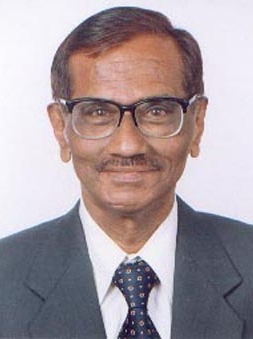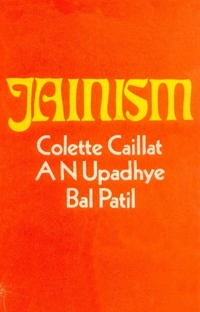The Jain doctine is symbolized by three jewels (tri-ratna), which are the right ‘knowledge’ (jnana), ‘insight’ or ‘faith’ (darsana) and ‘conduct’ (caritra).
The lineaments of the dogmatics are furnished by the canon and their commentaries; the first systematic exposition is presented by Umasvati in the Tattvarthadhigamasutra. It is suitable, although the Jain logic has been, for a good part, elaborated outside of the canon, to begin this summary with a general survey of the theory of knowledge.
Knowledge is an essential attribute of the soul (jiva). It accrues according to the norms of valid knowledge (pramana): the one, mediate (paroksa), rests on the indirect perception through the sensory organs. It is of two kinds and it presents two degrees: representative knowledge (mati), which is related with personal experience; traditional knowledge, which is acquired ex auditu thanks to the teachings of the Jina with the help of sacred texts. The second furnishes to the first the corroboration of testimony, and these two degrees of knowledge are indissolubly associated. The immediate knowledge (pratyaksa) permits the direct perception. It comprises three degrees: the avadhi-jnana, which permits to apprehend directly the material objects and which is sometimes innate (thus among the celestial beings and the infernal beings), sometimes acquired (thus among the human beings); the manahparyaya-jnana which reaches the mental modes, that is to say, other people’s thoughts: the third and the highest degree embraces all other forms of knowledge: it is the kevala-jnana, or omniscience, which alone is absolute and perfect.
The Jains have elaborated an original logic, which possibly arising out of the needs of controversy, opposes in some manner the data of experience of metaphysical speculations, Sketched in the Canon, it results in formulating the relativist theses or rather, it was said, a conditional dogmatism. It is expressed in the complementary doctrines of syad-vada, ‘doctrine of (different) possibilities,’ and of naya-vada, or ‘doctrine of methods’.
The syad-vada or anekanta-vada affirms that a predication is not valid absolutely but only if one takes into account multiple conditions (anekanta). The logicians distinguish finally seven modes of assertion, considering that the object ‘can be’ (syat): (1) such, (2) not-such, (3) such and not-such (in a case where it is envisaged under different angles), (4) ‘inexpressible’ (avaktavya), if one attempts to affirm simultaneously that which can be affirmed only successively, etc. The syad-vada is a synthetic method of knowledge. Not the less subtle, the naya-vada is on the contrary analytical. Instead of apprehending an object in its totality, the Jains consider one aspect solely to the exclusion of others. They retain consequently one of the seven principal points of view: that is to say the point of view of: (1) generic and specific qualities, (2) generic, (3) specific, (4) present qualities, (5) the point of view conforming to the usage, (6) conforming to etymology, (7) or that of the activity of the signified in relation with the etymological sense of the significant.
Jainism is a parinama-vada, a pluralist substantialism which insists on the reality of change (parinama). It admits that the substance (dravya) is the support of fundamental qualities (guna) and manifests itself according to transitory modes (paryaya).
Five ‘masses of being’ (astikaya) constitute the world (loka) and the not-world (aloka);to them is sometimes added, a sixth substance, the time (kala). Commonly distinguished are the soul (jiva) and, on the other hand, the inanimate substance (ajiva); matter (pudgala), space (akasa), time, movement (dharma) and cessation (adharma).
These masses of being are all eternal; all, except time, occupy ‘minimum spatials’. Matter alone is corporal, the others are incorporeal (arupa, amurta) and, consequently imperceptible to the senses.
By the fact that it is corporal, matter is essentially endowed with sensible qualities; colour (five species), taste (five species), smell (five species), touch (seven species). It furnishes to the souls a body where to abide and renders possible to them physical activities and passive affections. In the last analysis, it is composed of atoms (paramanu) in infinite numbers. Each one is eternal, indivisible, having naturally for dimension the minimal spatial unity, but is compressible. It possesses diverse sensible qualities but becomes perceptible to the sense only when aggregated with other atoms. The atoms possess a cohesive power which is exercised sometimes spontaneously, sometimes under exterior impulsion (under the action of karman). Consequently, they unite themselves in molecular aggregates (skandha) of which six varieties are recognized. Other properties of matter appear in such a case, so that it manifests itself according to ad infinity of modes. The four elements (dhatu), viz., earth, water, air, fire, are made manifest at the molecular level.
Space, an inert, incorporeal substance can be split up in infinity of spatial unities (pradesa). It is subdivided in two regions, he world (loka), or cosmic space, and the not-world, or ultra-cosmic space, which is unlimited and vacant. Only the world has the ‘power to contain’, that is to say, to localize the other substances: this is an essential attribute of the space.
Time, eternal, unique, and incorporeal, is not universal; certain regions of the world are destitute of it. It is not extended spatially, contrary to other substances; it does not occupy spatial points. It is constituted of distinct unities, the ‘atoms of time’ (kalanu), commonly called samaya, ‘moment’: the samaya is the time necessary for an atom of matter to traverse a point of space. Thus is defined the relationship which unites the structure of space and of time and the atomic structure of the matte.
Dharma and adharma are the ‘supports’ of all sorts of movement and to their cessation. They affect the souls and the matter, the first one, like water which permits the movement of the fish, the other like a tree which invites a traveler for rest. The Jain doctrine, the only one in which these two terms are given this meaning, also employs them, according to the canonical usage, for signifying the religious law and its opposite.
The soul is ‘life’ (jiva). Its essential characteristic is consciousness (cetana). The souls,in infinite numbers, are real spiritual monads, eternal, naturally identical and equal. But because they do not remain unsullied by all extrinsic influence, inequalities of status are found among them. So long as they are not liberated from matter they are united to a corporal organism, and coextensive with the bodies they inhabit.
There are five varieties of bodies, each one with its proper function. All corporal organisms possess at least two of them, four at the most. These are from the least to the most subtle: (1) the physical body(of flesh, of bone, etc), such as that of men and animals; (2) the body of transformation (vaikriyika), which transforms itself at the will of its possessor, and of which the celestial and infernal beings are naturally endowed; (3) the body of transference (anarika), inconsistent with the preceding, which permits the soul to know and to operate away from the place where the physical body is, and which is proper to man in particular cases: (4) the ardent body (Taijasa) which, formed of igneous particles permits the digestive functions and condenses a great quantity of energy and strength; (5) the karmic body, formed of the karman which is contained in the soul. The last two are found in all the beings.
The body, where the soul incarnates itself, is born according to the one or the other of three following manners: by sudden manifestation without material base (thus the gods and the infernal beings); by spontaneous coagulation of matter (for example, the inferior beings who have one to four senses); by constitution of an embryo (thus the human beings and majority of the superior animals). The bodies are of extremely diverse forms and shapes. The respiratory function is common to all, but not the faculty of movement.
From the mobile beings one distinguishes the immobile beings, the condition of which is miserable. They exist in five species; the minuscule particles constituted by one or the other of four elements and those of the nature of plants. The Jains hold that they are animated (an opinion which, like several others, may have been borrowed from animistic beliefs). But they have only sense, namely, the sense of touch. The mobile beings have from two to five senses: not only the sense of touch, but besides, and successively, the sense of touch, sight and hearing.
The sensorial activity has an organic as well as a psychic aspect. The sensorial organs are of a material nature. They directly come in contact with their object except, however, The sight, which does not need to touch it; the functioning of hearing is, besides, more subtle than that of the three inferior senses, because the sound is made of particles particularly tenuous and numerous; like the latter, the speech is material. To each sensorial organ corresponds a sense, the specialized function of the soul. The psychic
Function itself offers two degrees; the sensible or mental faculty, upayoga, and the experience of this faculty, labdhi.
Three exists besides a sixth sense, the internal sense(manas, mental organ) or understanding (sanjna, rational thinking): proper to the beings born of an embryo, it is essential in the process of representation, where one distinguishes four stages (the perception, the will to know, the determination, the fixation by the memory) conducive to the representative knowledge.
The fifth kind of body, the karmic body, is a specific organism, intimately attached to the spiritual monad of which it causes the servitude. This ligature has as a result the incarnation and migration of the souls, which is a law of the universe; it determines the variety of the beings of the world. It limits the soul and hinders it in the exercise of its powers.
It is when penetrating the soul that the subtle matte resulting from anterior intentions and volitions becomes karman. The soul indeed is invaded by the karmic flow (whereas its contact with other matter remains completely exterior). The influx (asrava) is provoked by the vibrations of the points of the soul; they put in movement the material particles which constitute the internal senses, speech, body; hence the attraction and conjunction (yoga) of those material particles which are apt to form the karman, with the spiritual monad. The bondage of the jiva results equally from other factors, and first of all from its action itself, which is impure (whatever the good or bad quality of the act) since it does not operate alone, but according to its second nature, in liaison with a corporal organism. There are also other causes of servitude, for instance, error, attachment, negligence. The solidity of the liaison which establishes itself between the spiritual substance and karmic a particle is variable. The force of attachments due to a principle called Kasaya, properly ‘glue’, figuratively ‘passion’. And the passions themselves arise precisely of karman.
In their absence the attachment ceases. But the process of depassionising is totally possible only in the religious life.
The Jains consider the duration, the intensity, the quantity of karman. According to its nature, they distinguish in it eight kinds, with their varieties and sub-varieties which are analyzed by specialized treatises (the karmagranatha). These are: (1) the karman which obscures knowledge (fivesub-divisions); (2) the karman which obscures insight (with two principal varieties, one veils the four general insights, the other plunges the spirit in five kinds of sleep; in all, indeed, nine sub-divisions); (3) the sensible karman perceived by the senses, giving rise to pleasure and pain (two sub-divisions); (4) the karman of aberration, which entails the aberration of the soul, misleads the faith and conduct. It is arranged in two classes and twenty-eight sub-divisions. It is while the conduct is led astray that the four fundamental passions (each with degrees) appear; anger, pride, deceit, greed. Then also there arise dispositions and traits of character which are not of a passionate nature, such as frivolity, pleasure and its opposite, sorrow, fear, aversion and sexual consciousness; (5) the karman which determines the quantity of life (in relation not with time, but with the matter: when the latter is exhausted, life comes to its end); (6) the karman which determines individuality (ninety –three varieties), (7) karman which determines the social rank (two varieties); (8) the karman of obstruction which puts obstacles in the progress of the soul (five varieties). In all, therefore, the karmagranthas enumerate not less than 148 varieties of karman. The first two kinds, the fourth and the eighth, which suppress the natural attributes of the soul, are consequently called ‘of destruction’ (ghati-karman), whereas the others (aghatikarman) only limit them.
After having infiltrated into the soul, the karmic matter sojourns there for a more or less long duration, sometimes very prolonged. In the meanwhile, it comes finally to maturation (vipaka). At this point, it is realized, it becomes experienced and, hence is cast away.
When it is free from karmic matter, the soul, being without weight, rejoin the summit of the universe. It is the karman which, loading it holds it in the ocean of existence (samsara) and leads it, following some general laws towards diverse conditions. When the quantity of life of the body where it lodges is exhausted, it attains to a new abode with the karmic body as a vehicle; it follows a line sometimes broken, each rectilinear trajectory needing an ‘instant’ (samaya). From its arrival at the place where it is going to develop a new body, the soul saddles itself with matter, and it is this process which constitutes, properly speaking, its reincarnation. Just as a monkey which swings from branch to branch, the soul darts forth from existence to existence, according to its proper movement, by the effect of its peculiar karman. Four ways of destiny (gati) are offered to it: human, divine, animal, infernal.
The acts do not merely affect the destiny of the soul: they impress it with the particularities of colour, taste, smell, touch, called lesya. In every category there are varieties and degrees which change perpetually according to the actions. The lesya, material products of the karman, determine the different types of souls, which are represented by the colours, black, dark, blue, grey, yellow, rose, white. It is certain that the nation of ‘colour’ of the soul dominates these speculations, and it is probable that the Jains have integrated and then adapted to their doctrine primitive beliefs, that apparently the Ajivika sect shares.
The Jain cosmology, though being altogether original, offers numerous similarities with that of the Hindus and the Buddhists.
The cosmos (loka) is one of the two regions of space. The ultra-cosmic universe, limitless, envelops it. It is in the cosmic universe that the souls, whether incarnated or incorporeal, reside.
It is represented, either as an egg-shaped volume compressed at its middle part, or, according to more recent texts, like a piling of three pyramid square at base, or, finally, in the form of an upright human figure.
It consists of three worlds: the middle world. Where the earth is situated, the nether world and the upper world, to which correspond the middle part and the nether and upper volumes of the figures which represent it.
Seven superimposed regions constitute the nether world. They slope gradually, in decreasing density, from the base to the middle compression, separated from each other by considerable space. These are the places of gloom and terror, glutinous, sometimes hot and sometimes cold, peopled by suffering beings who endure all the most frightening torments. The horror increases gradually as one goes down: the inhabitants of the deepest dwellings are those whose actions have been most criminal. At all the stages also suffer the animal particles or elementary plants who have been plunged there by their karman. Yet, in its highest layer, the nether world is peopled by the divinities and these move about equally in the middle world.
The middle world rests on an enormous disc. At the center stands erect the Mandara or Meru mountain, axis of the earth and pivot of the world, whose base plunges in the nether world. At the surface of the disc, encircling the Meru, fifteen concentric continents (called ‘islands’, dvipa) are separated from each other by the oceans in the form of a ring. The central continent, exactly circular, is the Jambudvipa, the ‘Island of the rose apple tree’, divided in seven transverse zones (varsa) by six chains of mountains which stretch from east to west. The cosmic tree, jambu, eponym of the continent, exists on the territory immediately to the north of the Meru. The middle world is par excellence, the one where live the human beings of whom, besides, there appear to exist more than one species. They are distributed on territories circumscribed quite narrowly.
Only one portion of Jambudvipa is naturally accessible to them. It is, situated in the southern extremity of the continent, the Bharatavarsa (India), the border of which are populated by the barbarians, where the center of the southern country is occupied by the civilized (arya). Beyond, on the two continents which encircle Jambudvipa (and up till the mountainous chain which forms a middle ring on one of these two ‘dvipas’ which is the farthest from ours), live human beings whose configuration appears monstrous to us. Their beauty is nevertheless dazzling, their life free and delightful, and they escape the law of karman. But the liberation is attained rather in the regions like the Bharatavarsa, which the karman governs, where the life is very painful, where it is necessary to practise the Doctrine. The middle world is besides populated by gods and animals. The animals are numerous, varied, on all its surface: sometimes imperceptible elementary particles-comprising therein in nigoda, subtle plant souls who have not had as yet contact with the karman, so that they have not commenced their development; they multiply, innumerable, in the whole world- sometimes being endowed with one or several senses up to the superior animals who have five. The divinities who haunt the middle world come there sometimes from the nether world as we have seen. Sometimes they also descend there from the upper world, for example, for venerating the Prophets of the Doctrine. The others finally, normally occupy our intermediate world: local eponymous gods surrounded by their courts, gods dispensing riches, glory, etc. It is in the middle world that the stellar gods are to be found; they are divided into five classes and exist all in double. Their princes are the two pairs of solar gods and of lunar gods. They are seated on chariots which thousands of other divinities draw. They gravitate around the Meru, accomplishing in twenty-four hours, half of the circuit, entirely on the same orbs, the radius of which change with the season. The two suns follow each other diametrically opposed, in such a way that we never see but one of the elements of this pair and that on all the points of the same longitude. To the north and south of the Central Mountain, it is mid-day precisely at the same instant.
The upper world, which commences infinitely over the stars and extends itself up to the limits of the universe, is in some sort symmetrical with the nether world. It is divided into terraced zones (the names of which are only sporadically mentioned). The lower zone slopes gradually in twelve stages, kalpa, certain of which go in pairs. The next zone of the upper skies is subdivided into two principal regions. Finally, at the culminating point of the world extends the abode of the liberated souls.
The heavens naturally, are of a marvellous beauty, illuminated by a light all the more pure when they are more elevated. They are inhabited by the resplendent deities whose height diminishes gradually as their abode is higher. One distinguishes those who reside in the kalpas from those who sojourn beyond. The divinities of the kalpas are ruled by the princes (among whom Indra-Sakra, and diverse gods of the Brahmanic pantheon), accompanied by their chief consorts who are the acknowledged queens. Like the human beings they are assisted by councils etc., governing the states, commanding the armies, establishing peace among their subjects, entering mutually into conflict. The divinities of the lower kalpas live in luxury and sensual pleasure, whereas the others experience less and less desire. These gods are more or less attached with the middle world. But, residing above the start, they escape the law of time.
Time reigns, on the contrary, in those countries of Jambudvipa which are subject to karman. As is the case generally with Indians, the Jains compare its course to the circular movement of the circumference of a wheel, and they divide it into periods, of a prodigious duration, which go on repeating themselves indefinitely. They are the kalpas’ ‘eons’.
In each one, Jainism distinguishes two phases both having six stages. First two, of very great, then of great prosperity. Afterwards the happiness decreases progressively till giving place to great misery. The wheel reascends then and following in an inverse order the succession of the ages, leads to new era of very great prosperity.
In the course of each of these descending (avasarpini) and ascending (utsarpini) phases, twenty-four prophets, the Jinas or Trithamkaras, literally ‘makers of Fords,’ live. Indeed, they find the way of liberation, and they mark it out for others (whereas the Pratyekabuddhas, having discovered it, do not preach it by sermons). They form the first group of ‘eminent personages’ to which are added twelve universal sovereigns (cakravartins) in the same manner as three series of nine knights (and a certain number of legislators). This mythology, in a great part posterior to the canon, more than once borrows from Brahmanic sources. It appears to be passably stereotyped. This is also the case in the sculpture; the Trithamkaras are not distinguished by an individual aspect but by symbols, generally animals.
The first Jina of each phase (descending or ascending) is born in the course of the third era, which is of prosperity mixed with sorrow. We are presently at the end of a declining with sorrow. We are presently at the end of a declining course. At the end of the third era, Rsabha is born (‘the Bull’—the bull being his symbol-also mentioned in the Puranas). The Jains regard him as the first of the prophets of the present series (consequently they call him Adinatha, ‘first savior’). Aided by his daughter Brahmi, he gives men diverse techniques, political institutions, writing, arithmetic, the science of divination. He has had numerous sons, the second of whom, Gomata or Bahubali, celebrated for his austerities, is greatly venerated by the Digambaras. Rsabha attained to nirvana at Satrunjaya. (1* According to ancient tradition at Kailasa.)
In the course of the fourth era lived the twenty-three other prophets. The Svetambaras believe- a point which the Digambaras deny - that the nineteenth was a female, the princess Malli the twenty-second and twenty-third are Neminatha and Parsvanatha. The former was of black colour and his symbol is a conch. Parsva, dark blue, is commonly represented with the head surmounted by seven hoods of a cobra. His cult is, indeed, in relationship with that of the Ophidians which, as is known, is extremely popular in India. This explains why he is the most adored of all the Trithamkaras, more even than Mahavira is. This last, whose attribute is a lion, who shines like gold, was born quite at the end of this fourth period,. seventy-five years, eight and a half months later began the fifth era, wherein we live, which is mostly wretchedness.
 Bal Patil
Bal Patil
 Prof Dr. Colette Caillat
Prof Dr. Colette Caillat
 Prof. Dr. Adinath Neminath Upadhye
Prof. Dr. Adinath Neminath Upadhye
